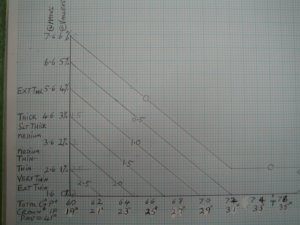strmrdr
Super_Ideal_Rock
- Joined
- Nov 1, 2003
- Messages
- 23,295
After John''s presentation last night I did some searching.
What I found was why consumers were recommending against thin girdles at times.
Garry is on the record saying that shallow crowned diamonds under around 33 to 33.5 degrees need a thicker girdle for durability reasons.
Dave A. is on the record that shallow crowns are a durability issue.
We need to get to the bottom of this so the best advice can be given here.
Is a thin girdle an issue with shallow crowns?
What I found was why consumers were recommending against thin girdles at times.
Garry is on the record saying that shallow crowned diamonds under around 33 to 33.5 degrees need a thicker girdle for durability reasons.
Dave A. is on the record that shallow crowns are a durability issue.
We need to get to the bottom of this so the best advice can be given here.
Is a thin girdle an issue with shallow crowns?









300x240.png)